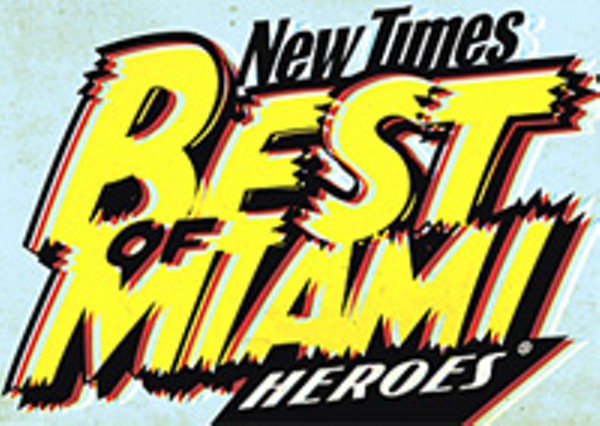Best Restaurant in Coconut Grove
Berries Restaurant & Juice Bar
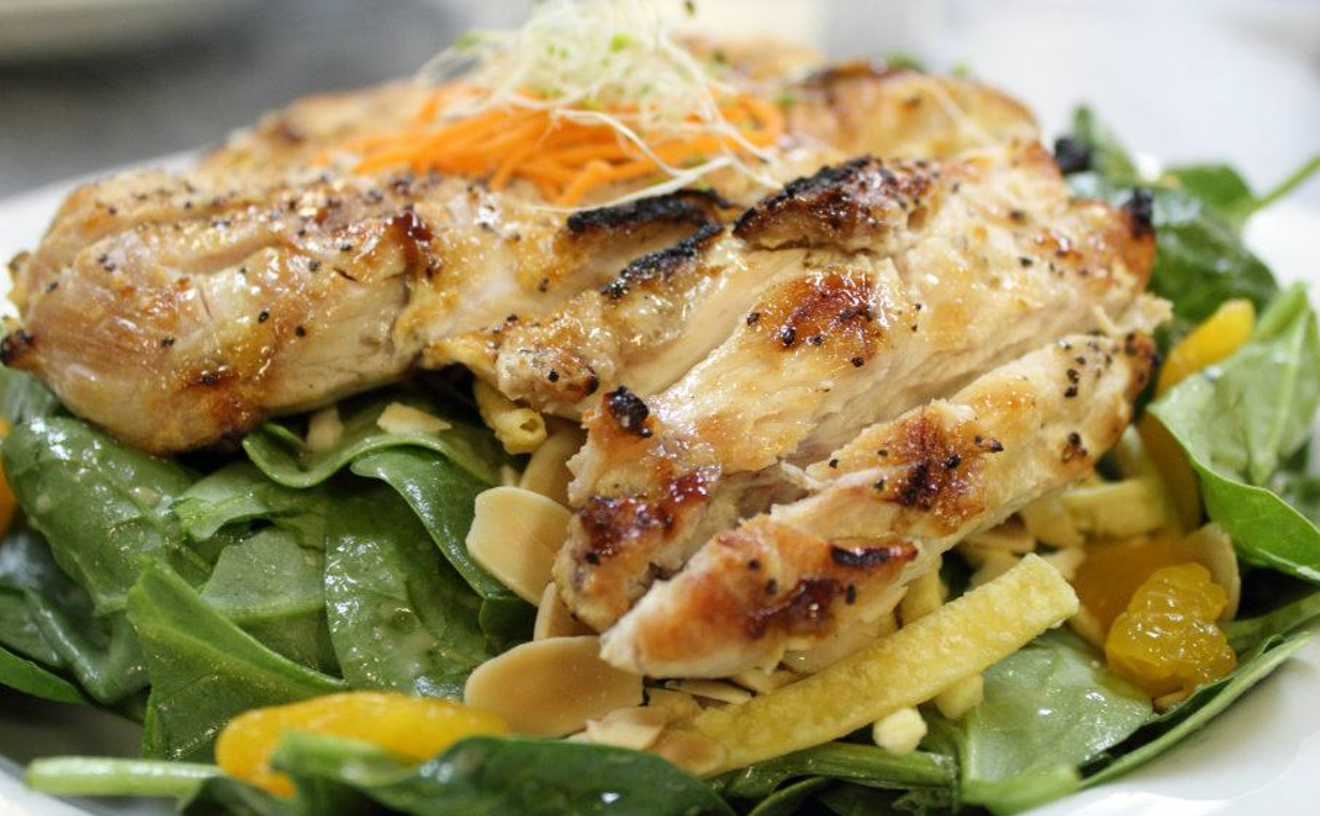
Berries is the type of restaurant that every neighborhood needs at least one of. Whether for breakfast, lunch, or dinner, when you grab a seat here you know you'll be getting hefty portions of hearty, well-prepared food at eminently reasonable prices (almost all entrées are under $20). The cuisine is nothing you haven't seen before, but chances are you haven't seen it done this consistently well. Fried calamari is greaseless, hummus is creamy with a slight chile piquancy, pastas are garnished with fresh, ripe tomatoes, and there are surprisingly satisfying specials such as mojo-marinated pork loin with pickled red onion, garlic mashed potatoes, and sauteéd spinach — now that's a square meal, alongside which you can wedge a huge, homemade, heartwarming chunk of milk chocolatey chocolate cake. As the restaurant's name implies, juices, shakes, and smoothies are house specialties, but at dinner you might want to consider the concise roster of inexpensive wines. A lushly foliated outdoor patio, daily happy hour with drinks 50 percent off, live jazz twice weekly — Jesus, what more could you want from your neighborhood restaurant?
- 2884 SW 27th Ave., Miami, 33133 Map
- 305-448-2111
- berriesinthegrove.com
Best Restaurant Downtown
Soya & Pomodoro
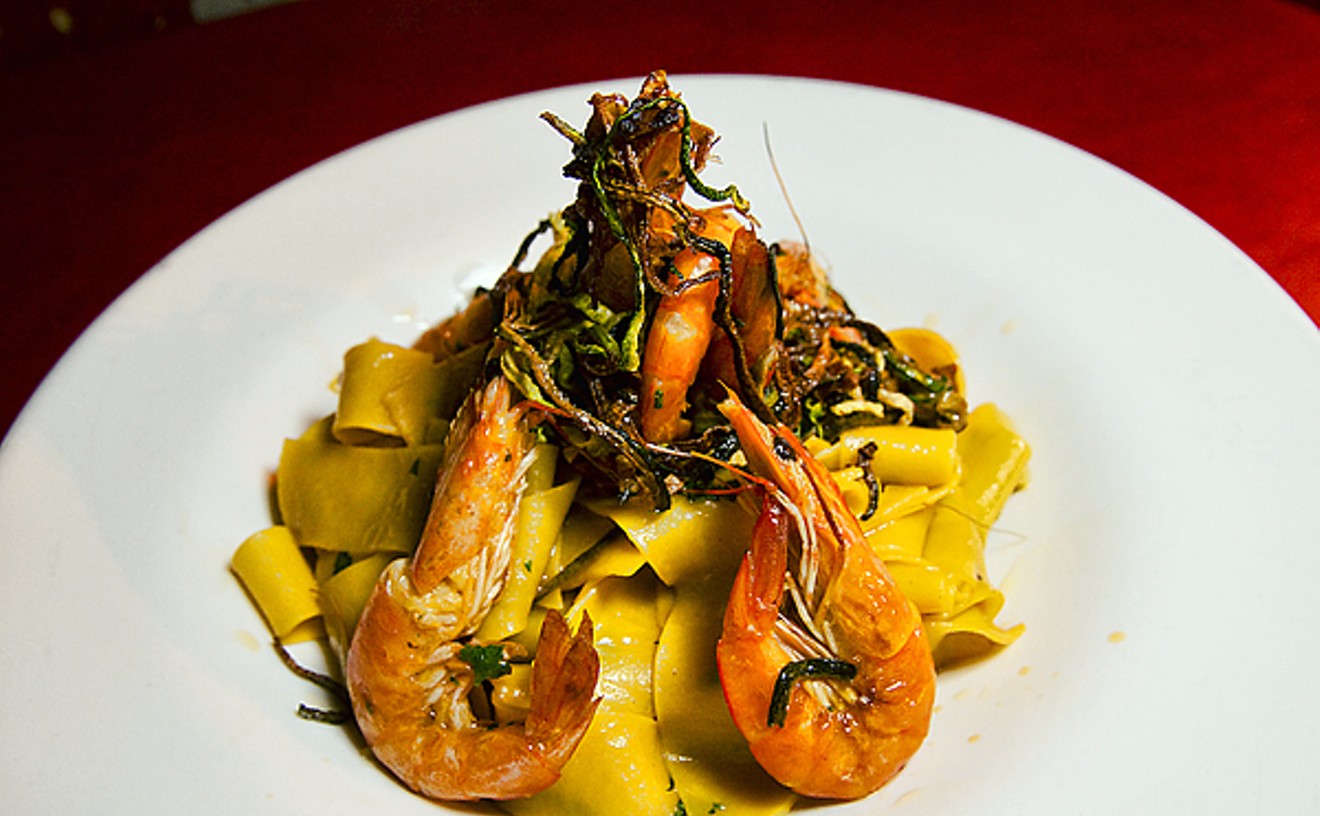
George Martinez
Soya & Pomodoro is a little restaurant that serves a soy burger at lunch ($6) but is otherwise all Italian. It's tucked away in a tiny spot on a rickety street in downtown Miami. No, sorry — it's tucked away in two tiny spots, one indoors, with two or three tables and a ventanita; the other an open-ended, kinda outdoor spot under a towering, but again rickety colonnade. Yet it's all strangely seductive, rustic, and charming, like a trattoria you might stumble into on some side street in Rome. The two spaces are attached to one another, and a kitchen somewhere in between pumps out what they call "simple food made with love," but what we call damn tasty red-sauce Italian food. Can't go wrong with ricotta and mushroom ravioli, or spaghetti Bolognese, or handmade gnocchi, or any of the pastas — they're terrific! And get this: Every menu item, excepting sirloin steak and salmon, is under ten dollars. The fish and steaks top out at $11 ($14 for dinner). Eminently drinkable wines are available at similarly bargain prices. Espressos are topnotch, and so is the homemade tiramisu. Soya & Pomodoro is open for breakfast and lunch daily, but serves dinner only on Thursday evenings, when there is also live music. an We haven't yet gotten around to tasting the soy burger.
- 120 NE First St., Miami, 33132 Map
- 305-381-9511
- soyaepomodoro.com
Best Restaurant in South Beach
Sardinia Enoteca Ristorante
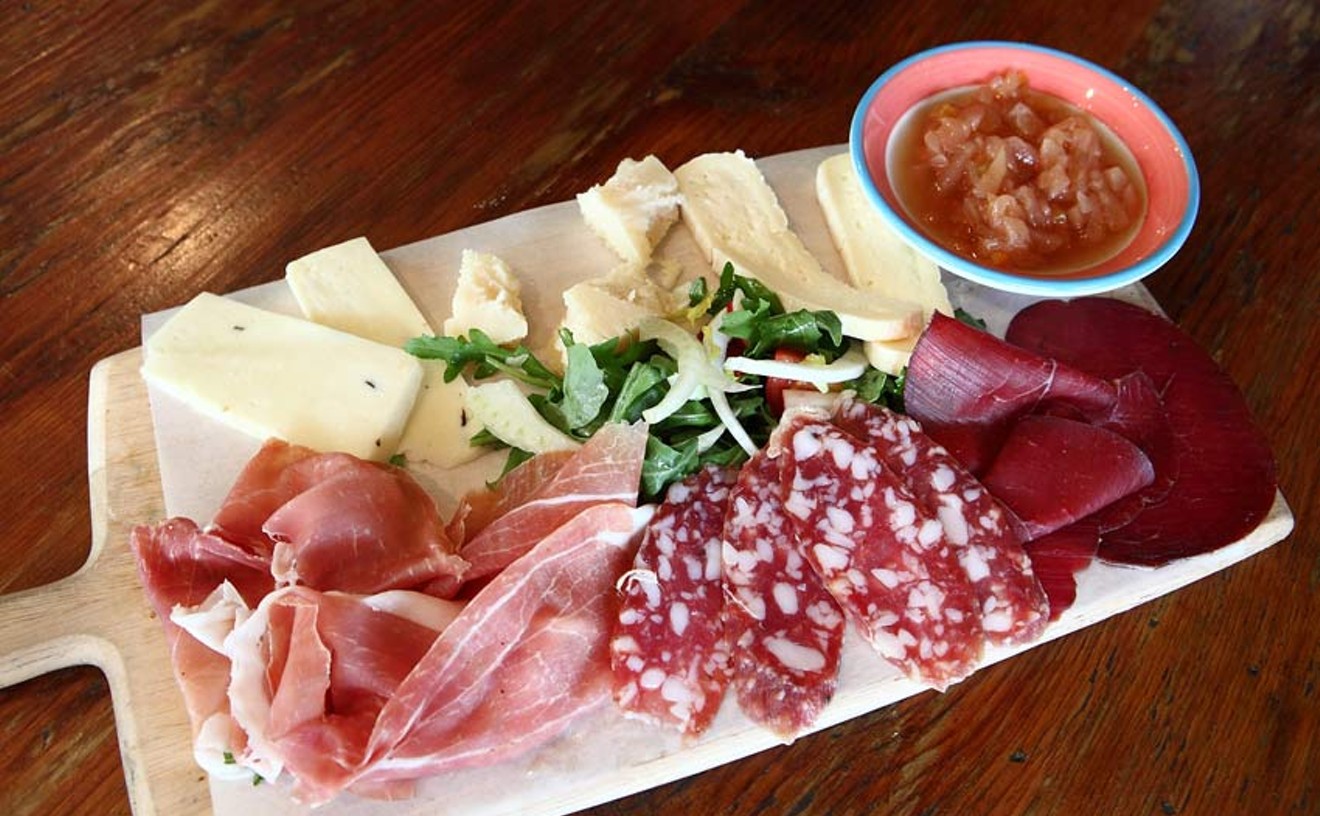
It just appeared, as if out of nowhere — one day there was no Sardinia Enoteca Ristorante in South Beach, the next day there was. And the day after that the 96-seater was packed to the gills, and hasn't seen an empty chair since. While "party hearty" is the draw for many a SoBe dining establishment, it is Sardi-hearty fare, rustic and robustly flavored, that has lit the fire of the public's fancy here. Lighting the smoky fire of a roaring open hearth are logs of wood beside which you'll find roasting baby suckling pigs, pancetta-wrapped quail, baked baby octopus, peasant-style stews, and Black Angus rib eye steaks. Sardinia offers a surplus of enticements unique to South Beach restaurants, among them olives with wild fennel flowers, boar sausage, chestnut honey, Italy's diverse cheeses, Sardinia's distinctive wines, professional service, and affordable prices — most pastas are $14 to $24; main courses are in the midtwenties range. There are no reservations accepted, so take advantage of a less-crowded lunch hour, or take your place in line.
- 1801 Purdy Ave., Miami Beach, 33139 Map
- 305-531-2228
- www.sardinia-ristorante.com
Best Restaurant in South Miami-Dade
Town Kitchen & Bar
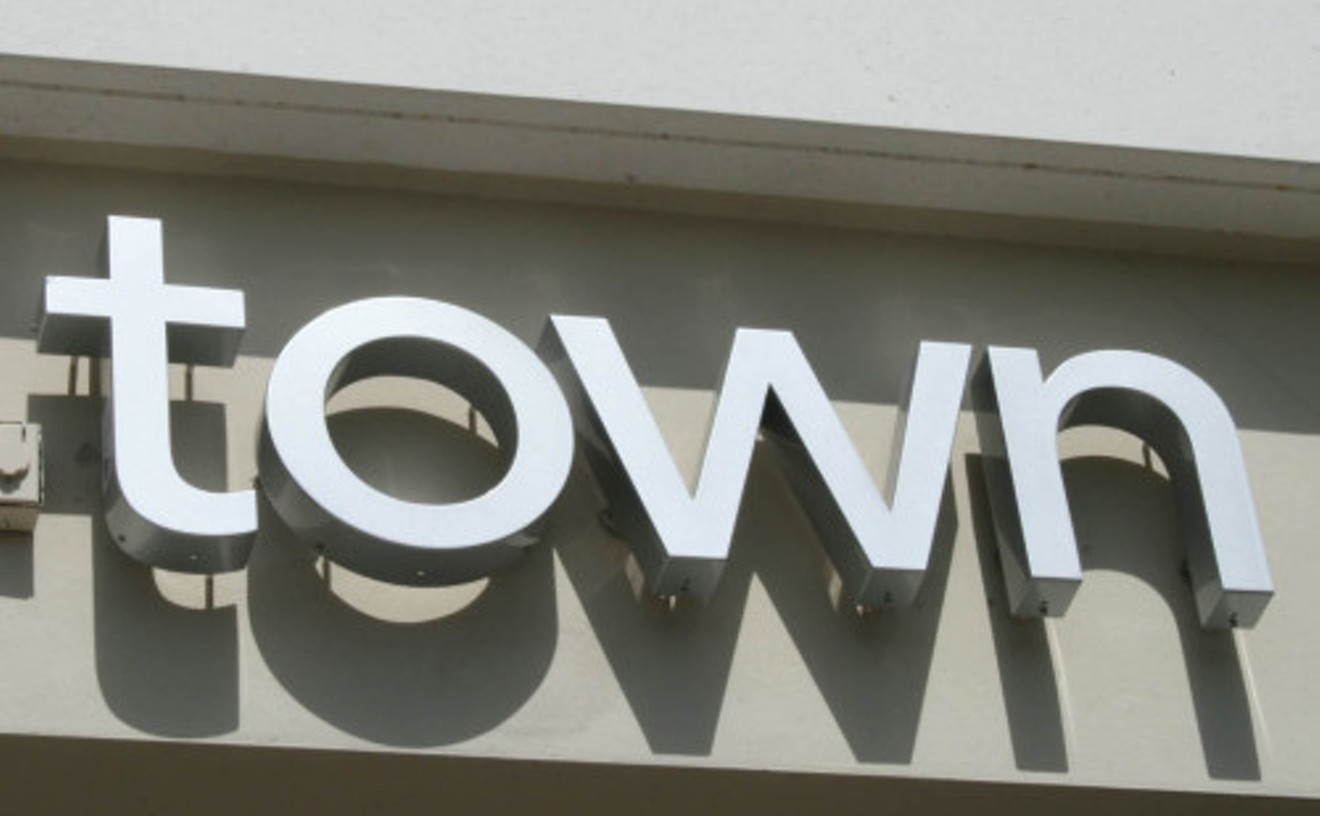
Once upon a time, South Miami was a big mall and nothing more. That was, like, a year or two ago. Then something happened, sort of suddenly, and things just started popping up. Things like clubs. And cafés. And restaurants. Even good restaurants, which the former mall-city never had many of. No dining establishment epitomizes the neighborhood's resurgence so much as Town Kitchen & Bar. Its urban-industrial design, with poured concrete floor and walls, looks more up-to-date than earlier area eateries. The big-city bar scene attracts a young and professional clientele who, cocktails in hand, overflow onto the outdoor patio in a way not before seen in these parts. Food is fun and fulsome, a medley of pizzas, pastas, salads, sandwiches, mussel pots, seafoods, and steaks. The last are especially fetching: grain-fed Angus beef from "Stockyard's Packing" in Chicago, sliced in-house, massaged with a wet rub of seasonings, and broiled at 1400 degrees. Prices are kept affordable — a twelve-ounce Delmonico steak dinner is just $22. Key lime pie is a product of The Blond Giraffe Key Lime Pie Factory, ice cream is imported from The Frieze, and espresso is courtesy of Illy. Those are quality goods, which with a healthy dose of joviality and cool urban vibe make this our kind of Town — be it lunch or dinnertime.
- 7301 SW 57th Ct., South Miami, 33143 Map
- 305-740-8118
- townkitchenbar.com
Best Restaurant in Key Biscayne
Le Croisic French Bistro
Three memorable moments in Key Biscayne history:1. In 1513 Juan Ponce de Leon, poking around for the fountain of youth, discovered Key Biscayne instead. Confused, he named the island Santa Marta, filled his ships' barrels with water, and took off. 2. Some 450 years later Bebe Rebozo moved here. He was pals with Richard Nixon. 3. In 2001, Le Croisic, named after a small town in Brittany, opened its rustic café doors off Crandon Boulevard. It was mostly a crperie back then, and a wispy gold galette, filled with Mediterranean vegetables, is still prepared the Old World way — with sarrasin, a Breton buckwheat that makes for an incomparably nutty batter. Nowadays, though, Croisic's menu goes way beyond crpes to encompass a wide vista of traditional bistro fare such as French onion soup, homemade foie gras terrine, crab quiche, a bouncy bouillabaise (only on Fridays), and a standout steak-frites — the crisp, succulent, shoestring fries alone qualify Croisic for honors, especially when dunked into a supplemental side of tangy, tarragon-flecked béarnaise sauce. Nothing beats a Molire flambé of cognac and strawberries wrapped in a sweet crpe for dessert — although the tarte tatin is exemplary too. Main courses are all kept below $30, service is friendly, the wine list is serviceable and unpretentious. As Molire would say: Ooh-la-la. Or was it Bebe Rebozo who said thatç
- 180 Crandon Blvd., Key Biscayne, 33149 Map
- 305-361-5888
Best Landmark Restaurant To Bite The Dust
Rascal House Restaurant
An elderly couple sitting on a bench in Sunny Isles:— Do you remember the pumpernickel rollsç— Do I remember the pumpernickel rollsç What kind of question is thatç Why not ask me if I recall our only daughter's weddingç Of course I remember the pumpernickel rolls!— Do you remember how big the pastrami sandwiches wereç— Who could finish such a thingç — And the knishes ...— Your sister Esther, may she rest in peace, used to schlep shopping bags of them back with her to Michigan.— Do you recall the matzo ball soup —— Don't get me started with the soups.— And was that chocolate babka not to die forç— I'd sell that ungrateful son of ours to Hamas — God forbid he should ever give us a call — to Hamas I'd sell him for another wedge of that babka!— Do you remember the blintzesç— Okay, enough already with the "do you remembers"! — I'm just saying, they couldn't let Rascal House stay open a few more yearsç — What, they're going to keep it going just for old birds like usç Who are we, the prince and princess of Monacoç — So many construction cranes. And such noise!— Oy.
Best Food Court
Aventura Mall
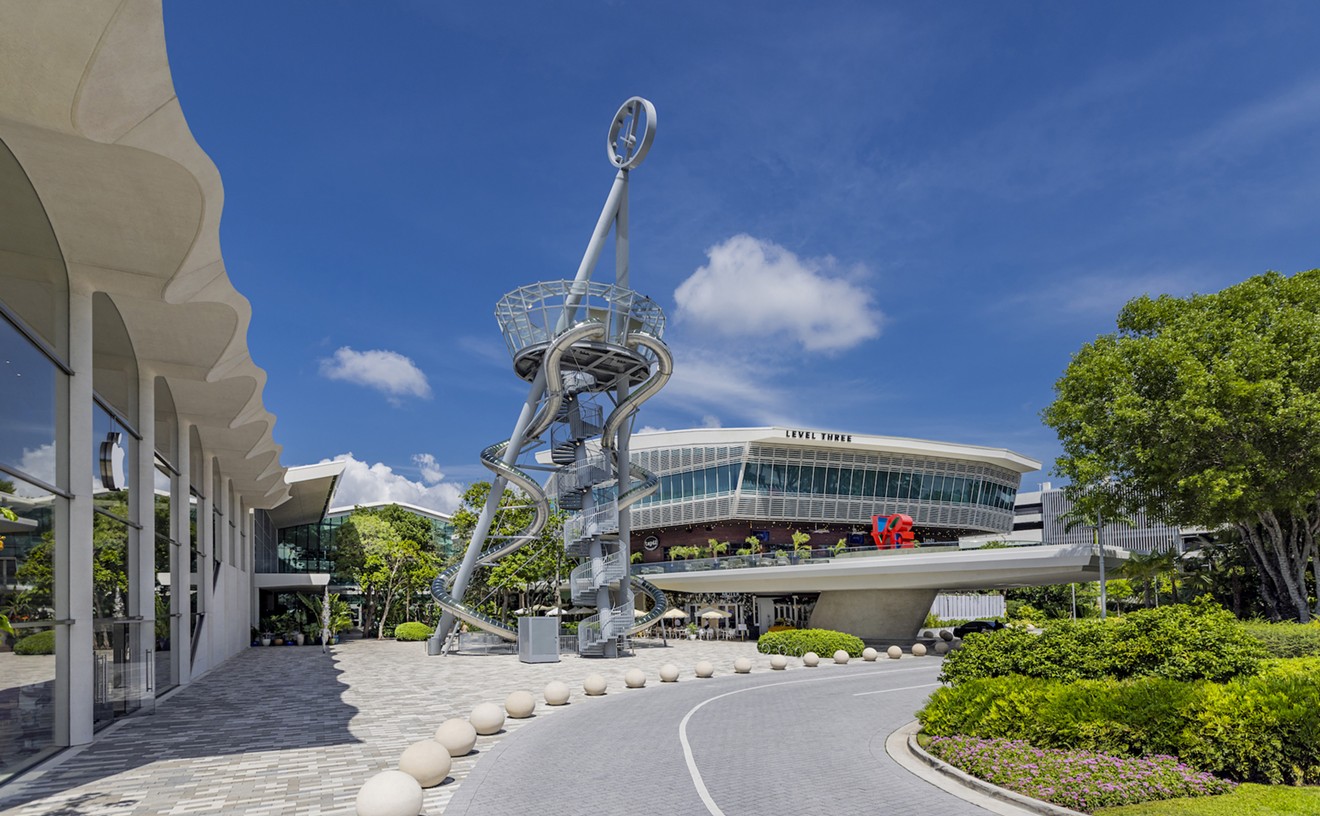
Aventura Mall photo
A food court is a food court is a food court. All malls follow the same basic template — cookies, cr?pes, and ice cream at the outskirts; Chinese and Japanese counters serving teriyaki and handing out chicken on toothpicks; some kind of baked potato place; and insert your random ethnic-lite option here. The seating area is guaranteed to be crowded on a weekend afternoon, and the grub is overpriced and served fast. So what makes Aventura's better than any other blueprint eatery zoneç Variety and beer.In addition to the expected Häagen-Dazs, Cr?pemaker, and Mrs. Fields Cookies at the court's opening, there's Teavana. A tea lover encountering it for the first time is likely to weep tears of joy that such a wonderful establishment even exists. Sip a free sample of Jasmine Pearls/Rooibos Tropicos blend and ponder the menu. Dudes with big appetites can nosh on Charlie's Grilled Subs — a large cheese steak and steak fries will set you back a Hamilton. Little ones intent on "pasghetti" can get lunch at Che Pasta. Pasha's is coming soon, and it'll be sandwiched between the sample-happy Asian Chao and Shrimp Market. Healthy options are available at an adorable homestyle Chicken Grill (replete with wood kitchen cupboards), and Paradise Café, where a ginormous salad costs $8.59. But the prize is Tropical Express, a Cuban joint that offers an authentic alternative to the traditional "ethnic lite" option. Besides Cuban sandwiches, churrasco served with maduros, and frijoles negros y arroz blanco, they've got coladas and cortaditos for a buck fifty. Plus, miserable shopped-out husbands can drown their sorrows with domestic beers for $3.20 and imports for $3.60.
- 19501 Biscayne Blvd., Aventura, 33180 Map
- 305-935-1110
- aventuramall.com
Best Decor
Azul

"God is liberal of color; so should man be." We have it on good authority that when Herman Melville offered these words on interior decorating, he was not referring to Azul, the acclaimed restaurant in the Mandarin Oriental Hotel. For one thing, Melville was long dead when Azul opened. Also, Azul isn't that colorful. Just gorgeous. A big, bright, slightly elevated open kitchen is clad in white marble and stainless steel, as is the ravishingly sexy raw bar. White linens grace the tables, champagne-color cloth upholsters the chairs, floors are of beautiful buffed rosewood, and a lovely lattice of metal screens the dining area from the bar. Azul is surrounded on three sides by bay, the unparalleled spectrum of which floods into the room via floor-to-ceiling windows. Blue and white do not a rainbow make, but Melville's advice has certainly been picked up by chef Clay Conley, who spins the whole color wheel onto his elegantly plated (and delectable) cuisine. Azul is a classic: the Moby Dick of Miami restaurant décor.
- 500 Brickell Key Dr., Miami, 33131 Map
- 305-913-8358
- www.mandarinoriental.com/miami/dining/azul/
Best Restaurant to Bite the Dust
Restaurant Brana
That restaurants die is a given. Just the same, the number of fatalities this past year seemed especially high, and cut across every ethnicity imaginable. The French bistro L'Entrecôte de Paris. The Italian Parioli Café. The Spanish Mosaico and, months later, its sister tapas bar, Salero. Madiba, the South African shebeen in South Beach. SouthWest NY, the Southwestern spot in the Dolphin Mall. The kosher Restaurant Juliette in Surfside. Even reliable restaurateurs like Dennis Max and Tom Billante experienced failure (Café Max in the Gables, Suga in SoBe). OLA South Beach closed and reopened a few blocks away (where Suga used to be). But nothing disappointed us more than the shuttering of Restaurant Brana after just six months in business. Chef Jeffrey Brana (formerly of Norman's) and his wife Anna Elena put their heart and soul into this elegant Coral Gables establishment, which boasted indigenous ingredients such as Indian River honey and Loxahatchee frogs' legs, and fresh produce hauled in from Homestead and nearby organic farms. Everything was homemade, from the whole grain bread to delectably dense Jamaican mint ice cream. Service was exceptional, as were the selections of artisanal cheeses and boutique wines. Gone, gone, gone. But there is a potentially happy ending to this story: The Branas are reputedly shopping around for a new location.
Best Last Meal on Earth
Rocky's Italian Ices
Saddam Hussein's last meal consisted of boiled chicken and rice. Adolf Eichmann simply swilled half a bottle of Carmel — an Israeli wine. John Wayne Gacy chowed down on fried chicken, fried shrimp, French fries, and strawberries (always healthy to finish with fresh fruit). Fried chicken, in case you were dying to know, is among the most popular last meal requests of the condemned. The most frightening final snack was Timothy McVeigh asking for two pints of Ben & Jerry's mint chocolate-chip ice cream — scary because it's so sane! Everyone exhibits their own uniquely personal style when it comes to a last supper choice, and you needn't be a convicted mass murderer to dwell upon what yours would ideally be. Ours: Well, pretty similar to that of mass murderer McVeigh's — after all, what could be more immediately refreshing and mind-numbingly satisfying than ice cream to have lingering on your lips as life slips awayç Rocky's Italian Ices, that's what. The closet-size takeout shop on Ocean Drive, with photos of Rocky Marciano and Rocky Balboa on its red, white, and green-tile walls, boasts the finest Italian ices south of Mulberry Street. Lemon, watermelon, banana, canteloupe, and a half-dozen or so other scintillating flavors are made from fresh fruit, and run $2.75 for a six-ounce cup, up to $7.95 for the sixteen-ounce size. We'd ask for one of those little plastic spoonfuls of every flavor to taste, and then request one pint of each.
- 1200 Ocean Dr., Miami Beach, 33139 Map
- 305-531-3301


